Cattle Head Restraint Comparison | How to Handle Cattle Safely
Why Proper Head Restraint Is Essential for Safe Cattle Handling
Go Back to All BlogsPosted on: August 7, 2023
Updated on: October 21, 2025
Author: Janelle Hulme
SHARE:
When it comes to the equipment you handle your cattle with, the equipment often comes down to personal preference. But what if we told you there is a better way? Let's take a look at the cattle head restraint options available to ranchers, and how a seemingly small addition to your chute can be the highlight or the pitfall of your day when handling cattle.
What is A Cattle Head Restraint For?
A head restraint is a piece of cattle equipment designed to stabilize the animal's head to allow the handler safe access for procedures such as ear tagging and treating pink eye. A good head restraint will minimize head movement by securing the cow's head and minimizing thrashing to protect cattle and handlers, and can be adjusted to work with cattle of any size.
What Types of Head Restraint are There?
Cattle Head Holder
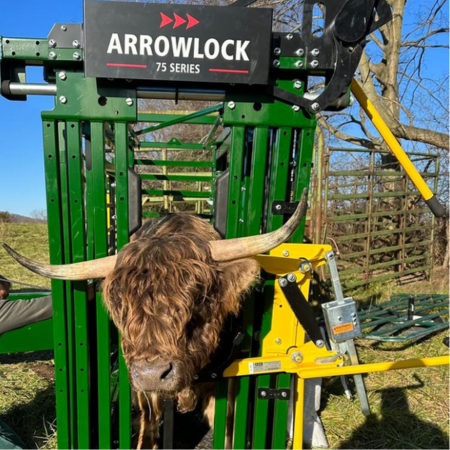
A Cattle Head Holder is a special type of head restraint designed by Arrowquip. The Cattle Head Holder features a scoop that cradles the lower part of the cow's head, and a bar on top to hold their head still.
The Head Holder is a two-piece head restraint that clamps down on the animal's neck, which ensures that cattle cannot thrash around.
The Q-Catch Head Holder can be adjusted to multiple heights to work with tiny calves and large bulls, and features an auto-locking mechanism for infinite adjustments.
Chin Bar
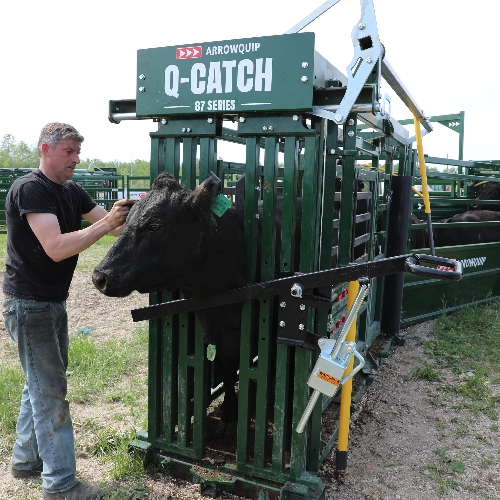
A Chin Bar lifts the animal's head from beneath to elongate the neck, which in turn minimizes their ability to thrash around.
A Chin Bar can be used for cattle of varying sizes, and prevents cattle from the dangerous possibility of going down in the chute because it works from below, rather than beside the head.
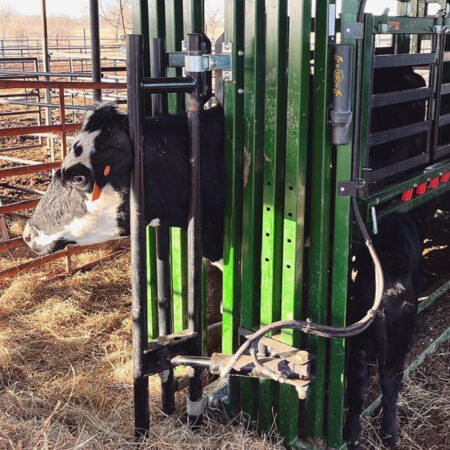
Head Sweep
A Head Sweep is a straight bar that is mounted on the head gate of a hydraulic chute. This bar is powered by the hydraulics on the equipment, and gently sweeps the cow's head over to one side.
One positive of a Head Sweep is that it is powered by the hydraulics on your equipment, so there is no manual work involved.
One downside of a Head Sweep is that it does not prevent a cow from going down in the chute, and depending on the model of head gate it can be very dangerous for a cow to go down while they are secured in a head sweep. (Adding a Sternum Bar is helpful if your cattle are prone to going down in the chute!)
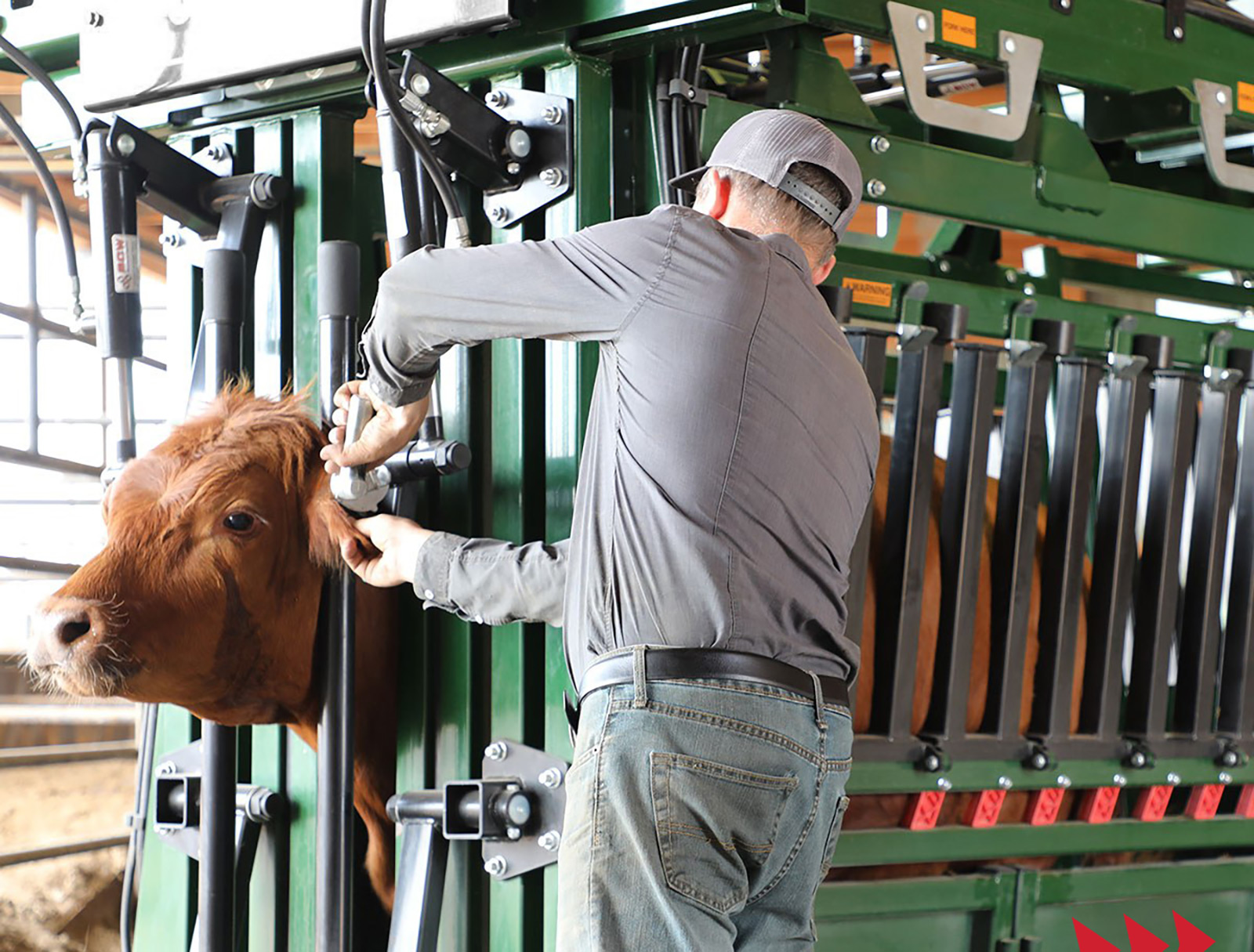
Cattle Neck Extenders
Cattle Neck Extenders are two bars attached to the front of a head gate. These bars stretch the neck of the cattle forward as they are caught in the head gate.
A new Neck Extender Design can be seen on The General, Arrowquip's newest truly heavy-duty hydraulic chute for feedlots and large cattle operations. They are also available on the Powerlock 108 Series, the virtually silent hydraulic chute that is perfect for cow-calf operations.
This unique design stretches the animal's neck out smoothly, regardless of position in the head gate for ease of use.
The neck extenders sit directly against the Head Gate to keep them out of the way when catching an animal in the head gate and prevent bruising on the cow's eyes, a common issue with stationary cattle neck extender designs.
In addition, the top-mounted cylinders ensure that the access to the neck of the animal is completely uninhibited, allowing handlers free access to the neck of the animal for vaccinations and injections.
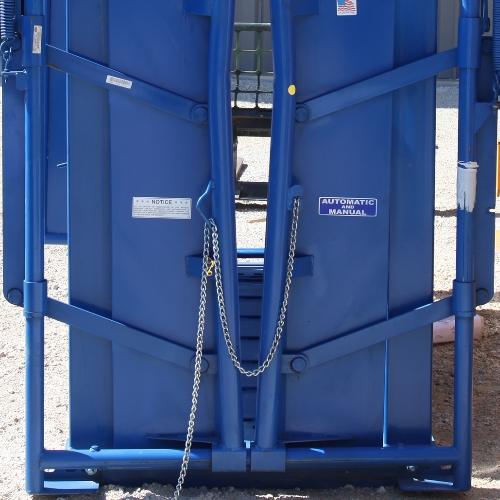
Chains
Chains are used as a low-cost head restraint by many manufacturers.
No matter how they are arranged, chains do not provide adequate control of a cow's head to be considered a proper head restraint.
Ropes
When chains are not available, ropes may be used in their place.
As with chains, ropes do not provide enough control of a cow's head to be considered a true head restraint.
When choosing a head restraint, it is important to consider the handling tasks that you complete on a regular basis. A Head Restraint can be a huge benefit to your operation, or a major downfall. Taking the time to do your research will help you determine which type is right for your needs, so the next time you manage your cattle will be easier than ever before.
What type of head restraint do you prefer? Tell us in the comments!